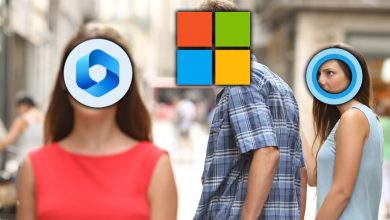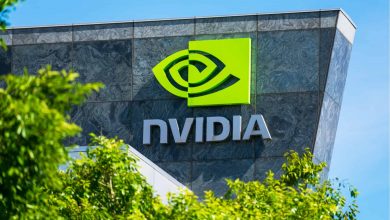The world of interactive entertainment has been revolutionized by the emergence of advanced game engines and technologies. This article delves into the intricacies of game engines, exploring their role in shaping modern video games, virtual reality experiences, and simulations. By examining key game engines, graphics rendering techniques, virtual reality innovations, and the impact of real-time technology, this article aims to provide insights into the dynamic landscape of interactive media and the technologies driving its evolution.
Introduction: Game engines and technologies have transformed how we interact with digital content. This article explores the core components and innovations behind game engines and their applications in video games, simulations, and virtual reality experiences.
Understanding Game Engines:
- Definition and Components: Game engines are software frameworks that provide tools, libraries, and functionalities to create and develop interactive digital experiences.
- Core Components: Game engines consist of rendering engines, physics engines, audio systems, scripting languages, and more.
Graphics Rendering Techniques:
- Real-Time Rendering: Rendering technologies like ray tracing and rasterization create lifelike visuals, enhancing player immersion.
- Global Illumination: Techniques like radiosity and photon mapping simulate realistic lighting and shadows, elevating visual quality.
Virtual Reality (VR) Innovations:
- Immersive Experiences: Game engines enable the creation of immersive VR worlds, enhancing user engagement and presence.
- Motion Tracking: VR technologies use sensors and cameras for precise motion tracking, creating realistic interactions.
Real-Time Technology Impact:
- Interactive Simulations: Real-time technology allows for dynamic simulations, used in industries like architecture, medicine, and training.
- Responsive Gameplay: Real-time rendering and physics engines contribute to responsive and interactive gameplay experiences.
Key Game Engines and Technologies:
- Unity: Widely used for its versatility and ease of use, Unity powers a diverse range of games and simulations.
- Unreal Engine: Known for its stunning graphics and realistic physics, Unreal Engine is popular in both gaming and architectural visualization.
- CryEngine: Renowned for its advanced graphics capabilities, CryEngine has been used in various games and VR applications.
- Godot Engine: An open-source option, Godot offers flexibility and customization for indie developers.
Augmented Reality (AR) Integration:
- Overlaying Digital Content: AR game engines like ARKit and ARCore allow digital elements to be overlaid onto the real world.
- Location-Based AR: AR technologies use GPS and real-world mapping for location-based gaming experiences.
Future Possibilities and Challenges:
- Realistic Simulations: Advanced physics engines and AI algorithms may lead to more realistic simulations and behaviors.
- Cross-Platform Compatibility: Technologies enabling seamless experiences across devices and platforms will become increasingly crucial.
Game engines and technologies are at the forefront of interactive entertainment, pushing the boundaries of what is possible in video games, simulations, and virtual reality experiences. As these technologies continue to evolve, they promise to redefine how we engage with digital content, offering new avenues for creativity, storytelling, and immersive interactions in the ever-evolving landscape of interactive media.
Embarking on the Journey of Self-Made Game Development
Creating your own video game is a rewarding and fulfilling endeavor that allows you to bring your creative visions to life. This article serves as a comprehensive guide to self-made game development, from conception to execution. By exploring key steps such as ideation, game design, programming, artwork, and distribution, this article aims to provide aspiring game developers with insights and practical advice to embark on their own journey of crafting unique and engaging video games.
Introduction: Embarking on the path of self-made game development offers a world of possibilities for creative expression and innovation. This article guides you through the essential steps and considerations to turn your game idea into a tangible and immersive experience.
Step 1: Ideation and Conceptualization:
- Brainstorming: Generate a variety of game ideas and concepts, considering genres, mechanics, and themes.
- Unique Selling Proposition: Identify what sets your game apart and makes it compelling to players.
Step 2: Game Design and Mechanics:
- Core Gameplay: Define the fundamental mechanics, controls, and objectives that drive player engagement.
- Level Design: Create a well-structured game environment with progressive challenges and a sense of progression.
Step 3: Programming and Development:
- Choosing a Game Engine: Select a game engine (e.g., Unity, Unreal Engine) that suits your skills and project scope.
- Coding: Implement game mechanics, features, and interactions using programming languages like C#, C++, or Python.
Step 4: Art and Visual Design:
- Character and Environment Design: Create visually appealing characters, environments, and assets that align with your game’s style.
- Graphics and Animation: Produce high-quality graphics and animations to enhance player immersion.
Step 5: Sound and Music:
- Sound Effects: Incorporate sound effects that complement gameplay and provide auditory feedback.
- Original Music: Compose or source music that matches the game’s atmosphere and evokes emotions.
Step 6: Testing and Iteration:
- Playtesting: Involve others in playtesting to gather feedback, identify bugs, and refine gameplay.
- Iterative Development: Continuously improve your game based on feedback, making necessary adjustments and enhancements.
Step 7: Marketing and Distribution:
- Creating a Presence: Establish a website, social media accounts, and promotional materials to showcase your game.
- Distribution Platforms: Publish your game on platforms like Steam, itch.io, or app stores to reach a wider audience.
Step 8: Launch and Post-Release:
- Launch Strategy: Plan a well-timed launch, build anticipation, and engage players with updates and teasers.
- Community Engagement: Interact with players, respond to feedback, and maintain an active community around your game.
Challenges and Considerations:
- Time Management: Balancing game development with other commitments requires effective time management.
- Skill Acquisition: Be prepared to learn new skills and technologies as you navigate different aspects of game development.
Creating your own video game is a journey that demands dedication, creativity, and perseverance. By following the steps outlined in this article and embracing the challenges along the way, you can transform your game idea into a unique and captivating experience that resonates with players around the world. The world of self-made game development is a realm of limitless possibilities, and your passion and determination are the driving forces that will propel you to success.


















